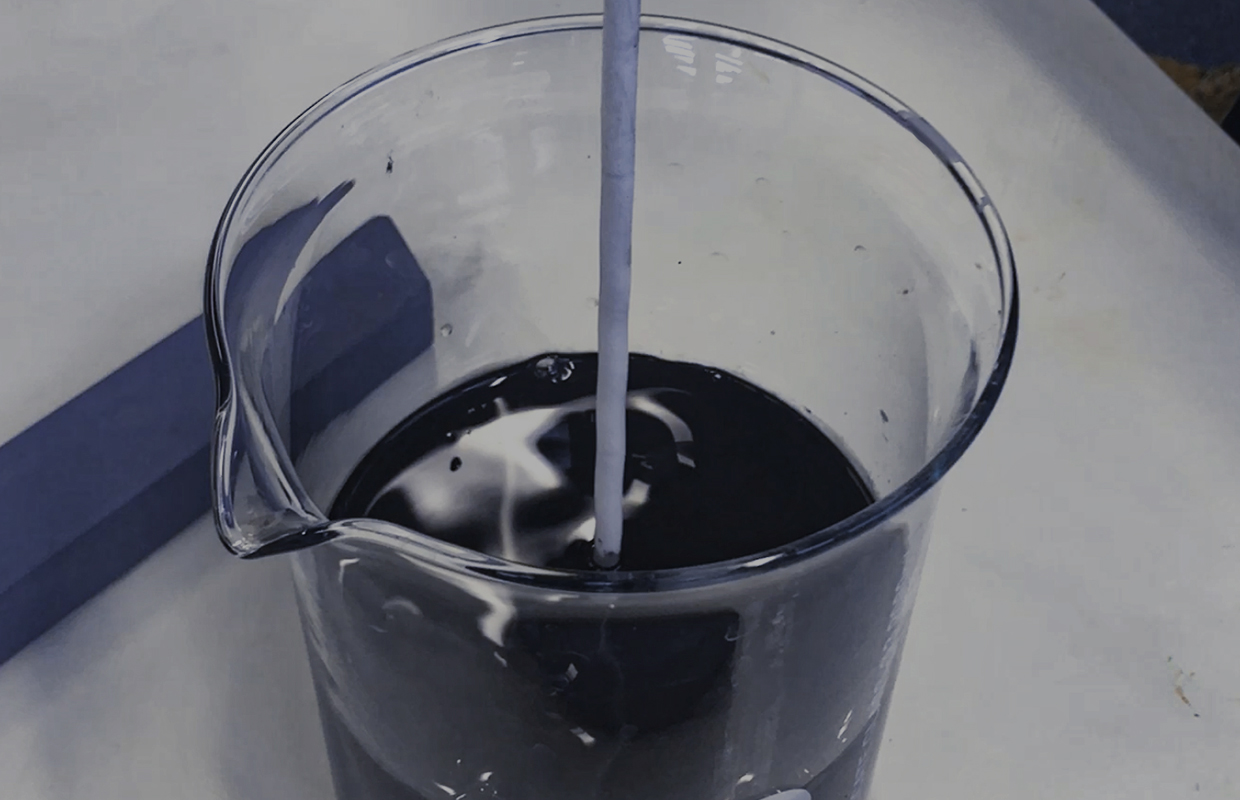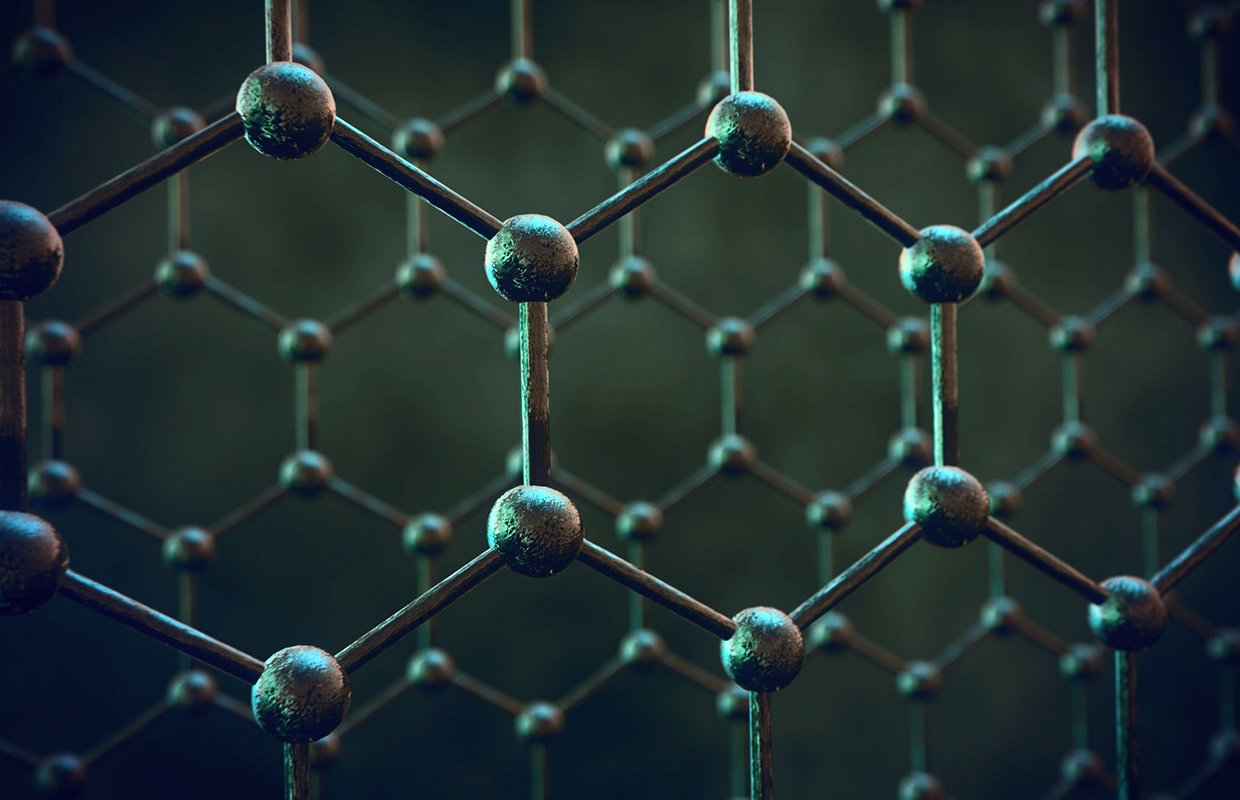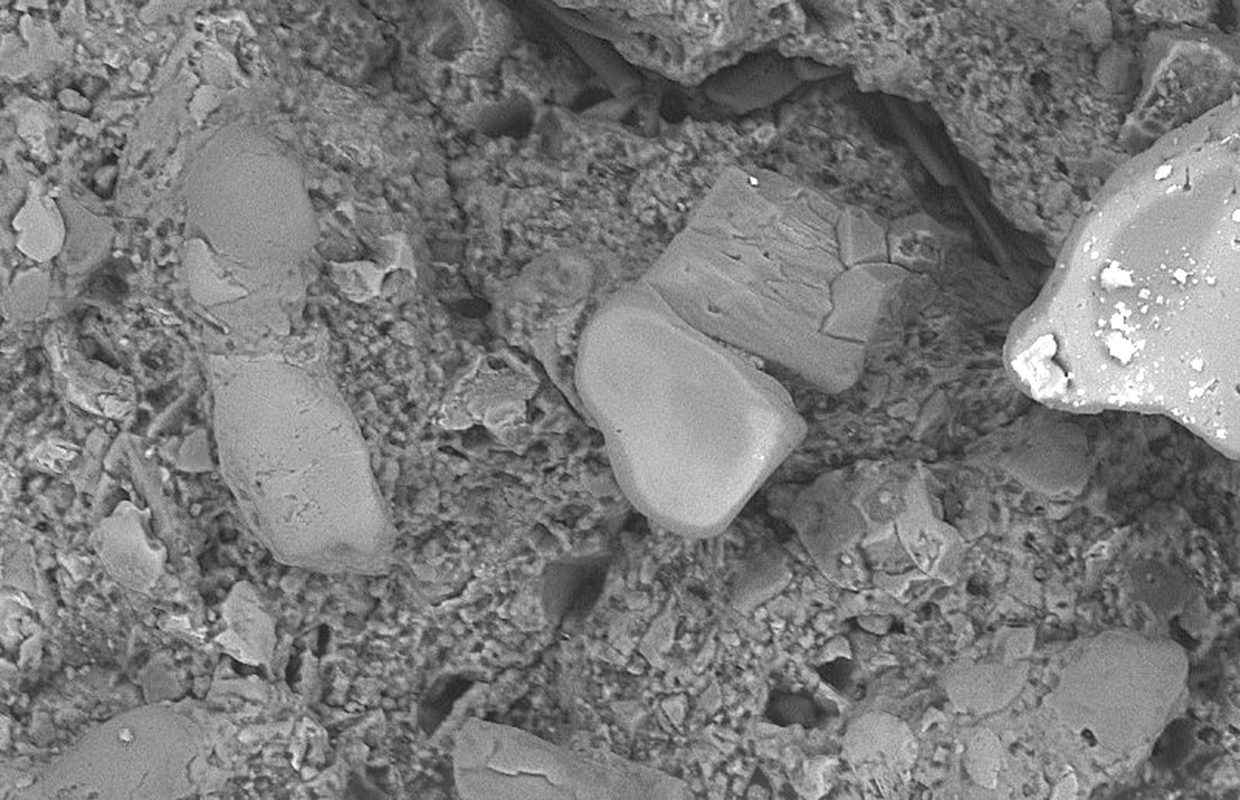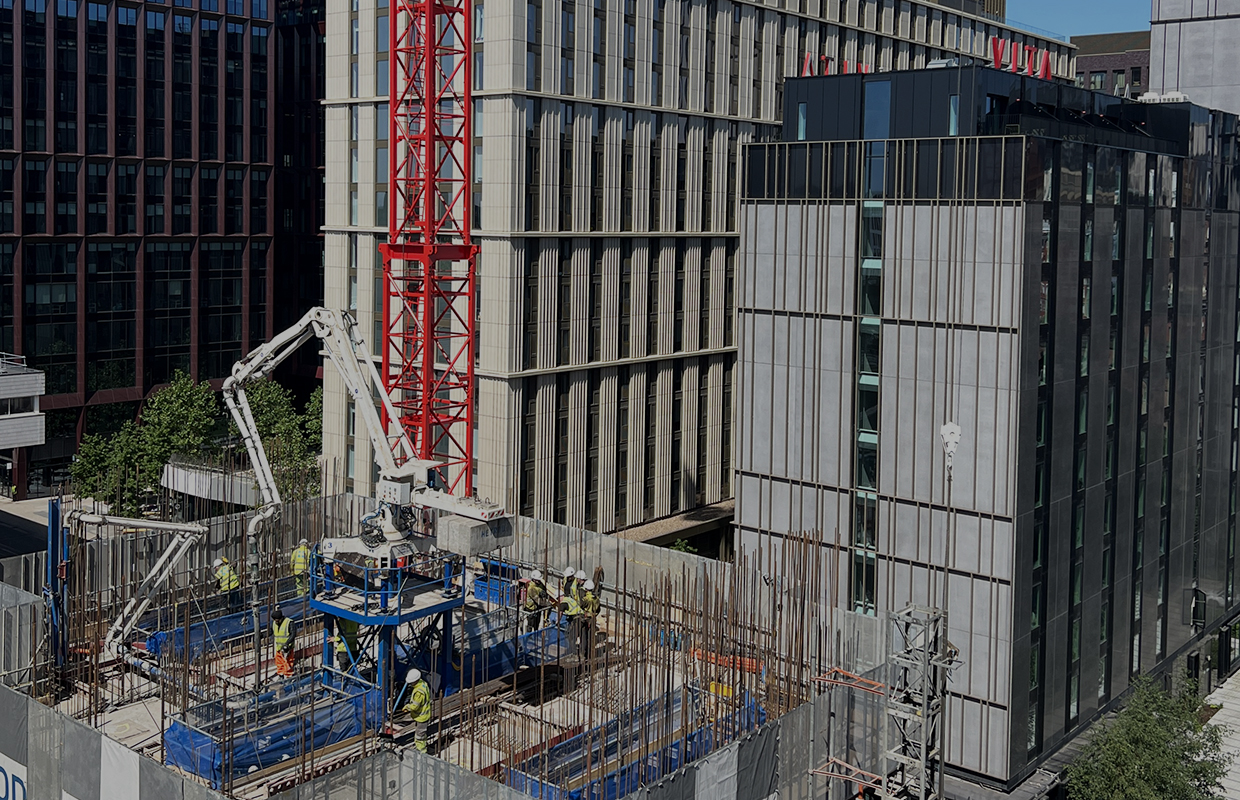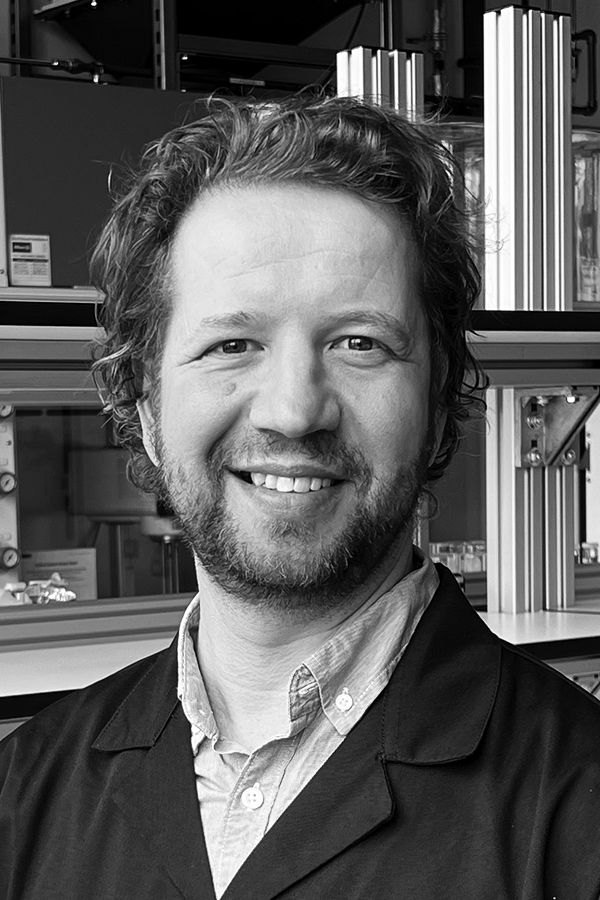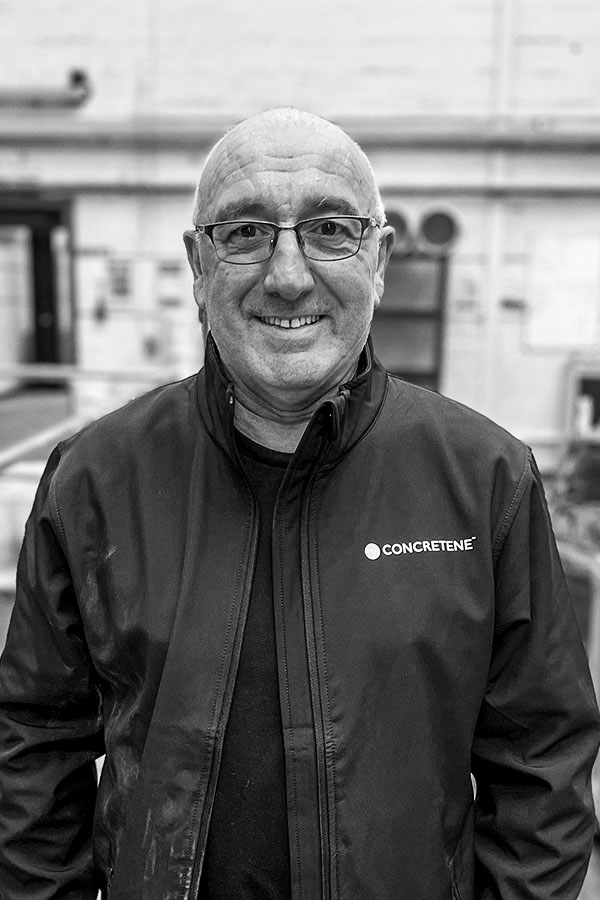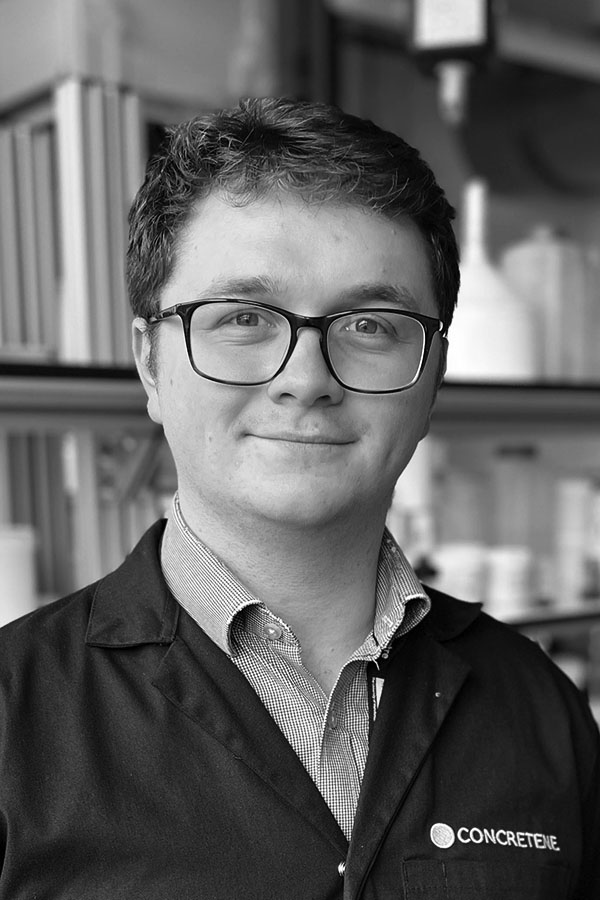WHAT IS CONCRETENE?
Concretene is a graphene-enhanced admixture for concrete, engineered to enhance performance and sustainability. Developed by Nationwide Engineering Research & Development (NERD) and The University of Manchester’s Graphene Engineering Innovation Centre (GEIC), the formulation reduces embodied carbon and supports the drive to net zero, creating a potentially game-changing technology for the construction industry.
Concrete is the most widely used man-made material on earth. Each year, 32 billion tonnes of concrete are produced, delivering 2.9bn tonnes of associated carbon dioxide emissions. Consequently, the global cement industry already accounts for more than 7% of worldwide CO₂ emissions.
The UN’s Intergovernmental Panel on Climate Change (IPCC) report states 75% of infrastructure to support population growth in 2050 remains to be built, while cement production is expected to double by 2030. Hence, embodied carbon in concrete is one of the world’s biggest environmental challenges, with no established, sustainable solution.
Imminent global legislation regarding Whole-Life Carbon (WLC) assessments and Upfront Embodied Carbon Limits (UECL) and associated taxation will drive adoption of CO2 reduction technologies by asset owners and the construction industry. Concretene has been developed to enhance the properties of concrete, aiming at a 30% reduction in cement content and proportionally decreased embodied carbon on construction projects.
The technology incorporates graphene, an atomically thin form of carbon, which improves the microstructure of concrete, significantly increasing compressive, tensile and flexural strength, reducing curing periods, microcracking and permeability.
The technology has been developed for use in existing batching plants, requiring no extra training or equipment, and can be scaled at a viable cost.
What is graphene?
Graphene was first isolated at The University of Manchester in 2004 by two scientists – Professor Andre Geim and Konstantin Novoselov – who subsequently received the Nobel Prize for Physics for their work in the field of atomically thin materials. It has been recognised as one of the most significant material discoveries of recent years because graphene’s 2D nature exhibits unique properties. It is exceedingly strong, light and flexible and is the most conductive material of both electricity and heat yet discovered.
Methods of graphene production have developed rapidly in recent years, with manufacturing processes developing to produce this material not only from raw graphite but from plastic waste, hydrogen production, battery production, wood char and other forms of industrial carbon waste.
The application drives the form and origin of the graphene used and high-volume production has created a viable, real-world application in concrete. Crucially, only very low dosages of the material, in some cases less than 0.01%, are required to deliver significant performance gains in mortars and cements.
Graphene is hydrophobic by nature, which means getting it to mix, interact and disperse in a water-based material such as concrete is highly complex. Numerous companies have conducted trials of graphene-enhanced concrete, but to date only Concretene has proven the performance at meaningful scale and patented its dispersal technology.
How does Concretene work?
The history of concrete stretches back thousands of years, yet the precise chemistry of the curing phase is still not fully understood and the range of mineral microstructures resulting from the hydration reaction is difficult to predict.
The introduction of nanomaterials further increases the complexity of the chemistry; however, observations indicate that graphene affects crystal formation, producing a more uniform overall structure.
Current thinking suggests that when graphene is properly dispersed in concrete, it acts to fill voids and provides nucleation sites for the formation of a stronger cement microstructure upon curing.
Microscope imaging of the final graphene-modified concrete materials exhibits a smaller, more evenly distributed pore network. This change in pore structure can prevent several concrete degradation mechanisms from occurring, including reduced moisture ingress, resistance to carbonation and a greater resistance to corrosive chemicals.
However, making effective graphene-enhanced concrete is technically challenging as, if uncontrolled, graphene agglomerates, reducing its effectiveness. Concretene’s patented technology allows graphene to disperse evenly in large volumes of concrete and also demonstrates stability in solution for storage and transport. Several years of optimisation work have been necessary to achieve these characteristics.
Why do we need Concretene?
Global annual CO2 emissions from cement production are forecast to reach 4.3bn tonnes by 2050 which, by volume, would fill London’s O2 Arena every 23 seconds. The challenges are an increase in cement use and the need to decarbonise the energy for its manufacture. The ‘carbon intensity’ of global cement production, CO2 emitted per tonne, continues to rise.
Environmental legislation to mitigate construction emissions is imminent or active in multiple countries globally. The US, Canada and European governments have made recent moves which will drive adoption in developed economies and influence others.
In the UK, the 2008 Climate Change Act has been bolstered by ‘Part Z’ of Building Regulations, in effect from January 2023. The changes drive carbon reduction, requiring a Whole Life Carbon (WLC) assessment be submitted for all new buildings which includes ‘dwellings’ from January 2025. Stipulations for carbon intensity, Upfront Embodied Carbon Limits (UECL), will come into force on 1 January 2027.
New environmental measures pose a robust challenge but also offer a significant opportunity to those willing to think differently about innovation in construction and take advantage of environmental social governance (ESG) focused asset investments.
Traditional solutions for cement reduction in concrete are rapidly becoming unsustainable. Cement replacements such as ground granulated blast-furnace slag (GGBS) and pulverised fly ash (PFA) are byproducts from thermal steel-production and coal-fired power stations, which are in terminal decline.
Currently, the embodied carbon of GGBS and PFA is not measured in lifecycle assessments. Limited supplies are increasing in cost as industry struggles to secure alternative low-carbon solutions. Concretene development is progressing to support cement replacement technologies such as calcined clays and crushed limestone that the industry is exploring.





